With Diamond’s year-end sales charts released, along with year-to-year comparisons, the pundits are out in force, making all kinds of observations and suggestions. We’ll try to run them down in an orderly fashion but you might want to get a cuppa…there are a lot of them,. We’ve bolded things for skimmers, however.
First off, heroic John Jackson Miller has taken all the sales charts and given us the Top 1000 Comics and Top 1000 GNs of 2010. Jackson finds softening in every region of the periodical chart:
So that’s declines in every grouping, supporting my contention about the flattening of the curve at the front part of the list described here before. There well could be a point on the list where the 2010 entries are outselling the 2009 entries, but I would have had to take both lists out rather far. If it’s the comics at the bottom of the Top 300 that are doing slightly better, those wouldn’t appear on an aggregated annual list until closer to the 3,000s.
BUT adding to the infographics, Diamond also released a list of top 200 comics and gns for non-premier publishers, giving us a deeper look into the long tail. Basically Dynamite ruled the periodical charts, while the GN chart was topped by Oni and Scott Pilgrim — however in general GNs showed a much wider variety of publishers than either periodical chart.
NOW, as to the conclusions drawn by this? Douglas Wolk, Todd Allen, Sean T. Collins and Jason Wood have all given us some breakdowns on what the charts are telling them. We’re going to mix up GNs and Periodical a bit in the following, but some of the overall trends apply to both, so try to bear with us.
Erik Larsen tweeted perhaps one of the most succinct analyses:
Fun fact! NINE of the TOP TEN graphic novels in 2010 were creator-owned books! Walking Dead, Kick-Ass and Scott Pilgrim among them.
The sole exception? The mysterious SUPERMAN EARTH ONE, a surprising hit whose success deserves future analysis. Because after that, it was a very creator heavy year. As Wolk pointed out — and Collins expanded upon —
“The 26 best-selling DC single issues were all written or co-written by either Geoff Johns or Grant Morrison.”
Bendis is in a similar position at Marvel, where he dominated the top of the charts. Collins expanded on this in a comment:
…if you look at the top of the charts, you could say that the ENTIRE INDUSTRY is a three-man operation between him, Johns, and Morrison. They’re all relatively prolific and they all wrote multiple, simultaneous bestselling series last year. But before you get to the first non-Johns/Morrison-penned DC title, the #74-ranking Green Lantern Corps #44 from Peter J. Tomasi, you hit the following non-Bendis Marvel writers: Victor Gischler at #2 (X-Men #1), Ed Brubaker at #13 (Secret Avengers #1), Jason Aaron at #17 (Wolverine #1), Rick Remender at #26 (Uncanny X-Force #1), Brubaker again at #44 (Captain America Reborn #6), Matt Fraction at #63-64 (Uncanny X-Men #523-524), Brubaker again at #65 (Secret Avengers #2), and Dan Slott at #73 (Amazing Spider-Man #648). Now, is it kind of nuts that 65 of the top 75 bestselling comics of the year from any publisher were written by one of three people? Yes. But Marvel appears to have a bit more luck in placing writers outside its go-to guy (and franchises outside its go-to franchise) high on the charts.
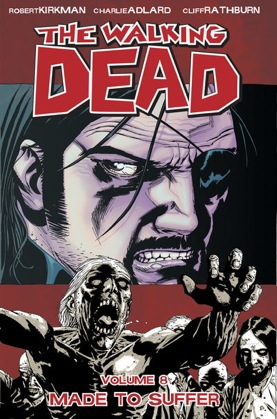
*Marvel’s highest-charting book was the Kick-Ass hardcover by Mark Millar and John Romita Jr., at #2–but its second-highest-charting book was Millar and Steve McNiven’s Wolverine: Old Man Logan, all the way down at #40. The highest-charting Marvel book not written by Millar was #64, The Dark Tower: Fall of Gilead.
Allen’s column looks as a number of metrics and draws a number of conclusions, mostly regarding GN sales. He picks up on something that others didn’t state as directly: Marvel had a poor year in books:
Looking at where the publishers chart, Dynamite’s The Boys is more popular than any graphic novel with a Marvel character in it, at least in terms of 2010 sales. Not the case in monthly sales and not what you were likely expecting. We do, however, see a lot of smaller publishers charting much higher with the graphic novels, than they do with monthly comics, and we see the licensed titles more prominently as the sales flagships. Is this a case of media franchise fans catching up or not wanting serialization and/or the monthly trips that requires? That’s a good question, but something’s up with that.
We highly recommend reading Allen’s column in full, but here are four conclusions he draws:
Conclusion #1: The graphic novel category is driven by cross-media exposure and character franchises.
Conclusion #2: Taken over a year, Vertigo holds up well.
Conclusion #3: Marvel is still taking their monthlies more seriously than their trades.
Conclusion #4: Crossovers have legs, gratuitous add-ons don’t.
Also, you can add Person of the Year Robert Kirkman to the essential list:
Between his Walking Dead and Invincible franchises, Robert Kirkman accounts for 28 books in the top 500. Make it 30 titles when you add volume one of Haunt at #67 and volume three of Astounding Wolfman at #378. That’s 6% of the top 500 titles. 44% of the top 25 (11 titles).
Allen also notes that CHEW and THE BOYS were the biggest sellers relative to not having any multimedia crossovers in the recent future or past.
Finally, iFanboy’s Wood digs more into the Non-Premier publisher list and has some conclusions of his own, which we’ll excerpt:
For periodicals:
1) Dynamite = DY-NO-MITE!
2) Boom! Waid a plus, Lee a maybe but everything else a question mark
3) Whither Avatar?
And for GNs:
1) Scott Pilgrim 1-upped the rest of the market
2) The One Piece conundrum (Manga sales don’t match Japanese phenomenon)
3) Fragmentation and lack of volume
Again, it’s best to read his entire analysis, but here’s some of the last point:
To say it’s tough for Non-Premier publishers to rely on the Direct Market would be an understatement. Only 48 graphic novels sold more than 3,000 units in the Direct Market last year according to Diamond. To put that into perspective, keep in mind that conservative estimates put the number of comic book stores at 3,000-4,000. So if something sells less than 3,000 units, it’s akin to selling less than one copy per store nationwide. Unlike the comics list, where Dynamite had a dominant market share, the sales of graphic novels is far more balanced. While Viz had 56 of the 200, which seems fairly dominant, keep in mind that sales of the average Viz book sold 2,148 units. Beyond Viz, 32 other publishers placed at least one book in the Top 200.
It’s always difficult to draw sweeping conclusions from these lists, although Diamond’s near monopolistic position in the Direct Market does make them representative of the vast majority of sales in the LCS market. What’s evident from these lists though, is that even the most successful publishers in the back of Previews (i.e., Dynamite, Boom!, Viz, Oni), absolutely have to continue to push their content into other channels. Because the numbers they’re doing outside of the occasional outlier hit (e.g., Scott Pilgrim or Green Hornet) inside the Direct Market are by no means robust.
And now some observations of our own:
Creator-owned or creator participation work absolutely RULED the graphic novel charts.
Looking at the Top Fifty GNs of the year, exactly half were creator-owned — most of them by Robert Kirkman.
BENNY AND PENNY BIG NO NO HC
BOYS TP VOL 06 SELF-PRESERVATION SOCIETY (MR)
CHEW TP VOL 01 (MR)
CHEW TP VOL 02 INTERNATIONAL FLAVOR (MR)
HELLBOY TP VOL 09 WILD HUNT
INVINCIBLE TP VOL 12 STILL STANDING
KICK ASS PREM HC (MR)
SCOTT PILGRIM GN VOL 01 PRECIOUS LITTLE LIFE
SCOTT PILGRIM GN VOL 02 VS THE WORLD
SCOTT PILGRIM GN VOL 03 INFINITE SADNESS
SCOTT PILGRIM GN VOL 04 GETS IT TOGETHER
SCOTT PILGRIM GN VOL 05 VS THE UNIVERSE
SCOTT PILGRIM GN VOL 06 FINEST HOUR
WALKING DEAD TP VOL 01 DAYS GONE BYE
WALKING DEAD TP VOL 02 MILES BEHIND US (NEW PTG)
WALKING DEAD TP VOL 03 SAFETY BEHIND BARS
WALKING DEAD TP VOL 04 HEARTS DESIRE (NEW PTG)
WALKING DEAD TP VOL 05 BEST DEFENSE (NEW PTG)
WALKING DEAD TP VOL 06 SORROWFUL LIFE (NEW PTG)
WALKING DEAD TP VOL 07 THE CALM BEFORE
WALKING DEAD TP VOL 08 MADE TO SUFFER (MR)
WALKING DEAD TP VOL 09 HERE WE REMAIN (MR)
WALKING DEAD TP VOL 10 WHAT WE BECOME
WALKING DEAD TP VOL 11 FEAR THE HUNTERS (MR)
WALKING DEAD TP VOL 12 LIFE AMONG THEM
WALKING DEAD TP VOL 13 TOO FAR GONE (MR)
Another seven were what we’d called “creator participation” via the old DC/Vertigo deal:
FABLES TP VOL 01 LEGENDS IN EXILE
FABLES TP VOL 13 THE GREAT FABLES CROSSOVER (MR)
FABLES TP VOL 14 WITCHES (MR)
SANDMAN TP VOL 01 PRELUDES & NOCTURNES NEW ED (MR)
UNWRITTEN TP VOL 01 TOMMY TAYLOR BOGUS IDENTITY NEW ED (MR)
WATCHMEN TP
Y THE LAST MAN TP VOL 01 UNMANNED
(You could argue WATCHMEN and SANDMAN being on that list, but they were created long ago more in the spirit of what was then considered creator-participation. But feel free to move them.) The appearance of UNWRITTEN by Mike Carey and Peter Gross here shows that the creator-driven premise can still find purchase at a big company, if it’s strong enough.
14 books were company-owned superheroes, mostly by Grant Morrison, Geoff Johns or Mark Millar:
ALL STAR SUPERMAN TP VOL 02
BATMAN AND ROBIN DELUXE HC VOL 01 BATMAN REBORN
BATMAN ARKHAM ASYLUM MADNESS HC
BATMAN DARK KNIGHT RETURNS TP
BATMAN HUSH COMPLETE TP
BATMAN RIP TP
BLACKEST NIGHT GREEN LANTERN CORPS HC
BLACKEST NIGHT GREEN LANTERN HC
BLACKEST NIGHT HC
CIVIL WAR TP
FINAL CRISIS TP
GREEN LANTERN REBIRTH TP
SUPERMAN EARTH ONE HC
WOLVERINE OLD MAN LOGAN TP
Three were what we’d call “licensed” books for lack of a better word:
BTVS SEASON 8 TP VOL 06 RETREAT
SERENITY SHEPHERDS TALE HC
RICHARD STARKS PARKER THE OUTFIT HC
So no huge secret here: people buy books because they are by an author they like. And it’s also no secret that the backlist is am important revenue stream for publishing companies. A hit like CIVIL WAR that lasts into book sales year after year pays off way more than some miniseries with multiple creators — remember the big controversy over delaying the book so Steve McNiven could finish it himself? That paid off. Tom Brevoort was right!
Of course it takes time to develop the talent of a Morrison or Johns or Millar — but maybe getting them developed and giving the next generation of graphic novelists room to stake out their territory is a good idea. The youngest creators on these charts — O’Malley and Kirkman — developed entirely outside the Big Two, unsurprisingly, and that’s where the work that is going to take comics publishing into the next generation of readers is growing right now. It’s not at all clear that Marvel and DC can even tap into that energy any more.
Another observation, to back up Allen’s: Marvel’s GN program needs work. 2010 was a transitional year for Marvel as they moved from Diamond to Hachette as their book distributor so it’s not surprising they weren’t storming the charts. We heard lots of stories about “growing pains” from folks on both sides. Marvel puts out plenty of GNs a year, and these figures don’t give us a line average, but lost in their program somewhat is the way that backlist favorites drive periodical sales. An entry point like ARKHAM ASYLUM or HUSH or even SUPERMAN: EARTH ONE helps give the periodicals a boost. It’s not that Marvel doesn’t have tons of good books that they could promote…but their lingering print-to-order practices make reorders less of a priority.
OKAY, that’s enough for now. We imagine that Brian Hibbs will be along with his annual BookScan analysis soon and we’ll be able to combine that with Miller’s top 1000 for the best sales chart ever! And then we can get into rounds two and three.


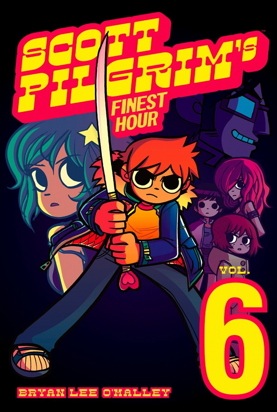
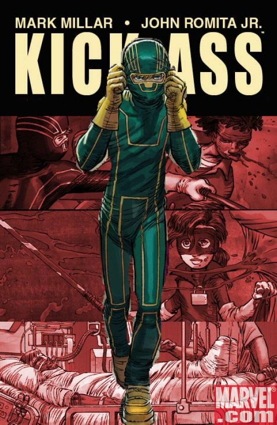
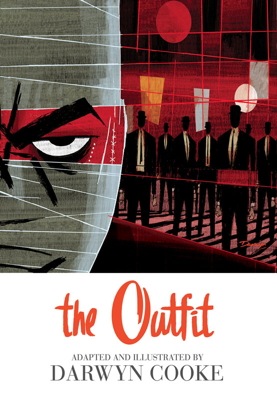
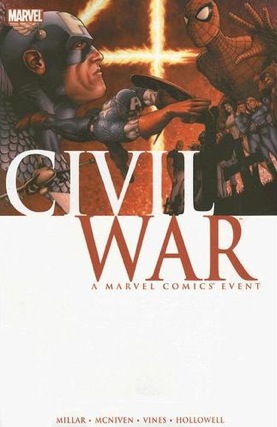
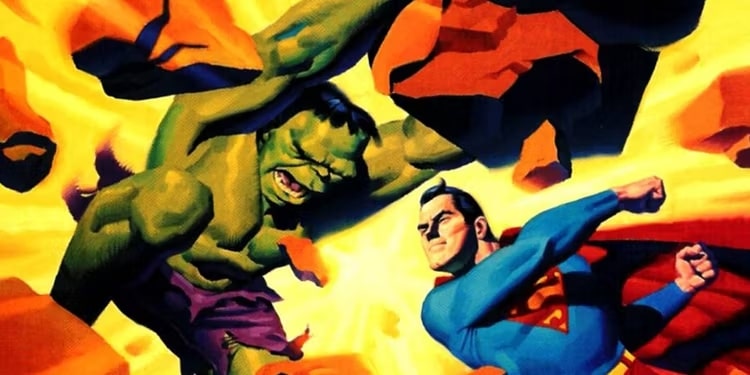

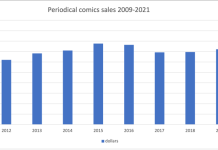



I have to strongly disagree with your statement that Brevoort was right about Civil War. That book would still be selling just fine if it had a different artist or artists take over the book and get it it out in a timely fashion.
And no number of copies of Civil War sold will make up for the amount of sales that have been lost since by the people who practically walked away from monthly comics altogether because of that debacle. There were many lapsed readers who were buying Civil War and when the lateness happened they said “Oh yeah, that’s why I stopped buying these the first time around.” and they walked away. We haven’t had an event comic since Civil War come close to Civil War #1’s numbers for a reason.
2011 will again be the year of the creator.
Actually every year is the year of the creator. Just some people don’t realize it.
That’s true. The early 1990s were the years of the Image creators, after all.
Marvel was lackluster in the Bookscan 2009 list as well… I think their bestseller then was The Wizard of Oz. Kick-Ass would have charted higher had Marvel not sold out of the hardcovers the week after the movie hit.
If one looks at the Top 300 GN lists every month, three things are noticeable:
* Vertigo backlist sells consistently,
* There is a diverse number of publishers making the list (some who do not make the comics list), and
* Non-comics book publishers are selling in the Direct Market.
I don’t know if it charted on Diamond, but the Scott Pilgrim 6-volume box set was a bestseller on BN.com . As was the Outlander and Troublemaker GNs. As were a lot of titles not really seen on the Diamond list. Expect a BIG disconnect when the Bookscan rankings are released and compared to the Diamond sales. (I’ve even heard that Raina Telgemeier’s “Smile” had sales in the six digits last year, mostly to libraries and schools.)
Manga does chart on the Top 300 GN, but the bulk of the sales are in bookstores. One Piece will probably trump Marvel on Bookscan.
I think just about everyone is going to trump Marvel in Bookscan.
In his column last year, Hibbs talked about condensing Marvel’s listings in with Dark Horse, or with the non-Premier Publishers. It’s been like this for a couple years, Marvel has absolutely no back-list program to speak of.
Heidi,
Actually had an editor tell me during the 1990s that it wasn’t the creators–it was the properties, the editors, the publishing house.
I just looked at him as if he was from Mars.
“It’s always difficult to draw sweeping conclusions from these lists…” – but those of us that continue to use incomplete numbers will do it anyway!
“Because the numbers they’re doing outside of the occasional outlier hit … inside the Direct Market are by no means robust.” – but we’ll continue to look at the DM numbers anway, even though we KNOW they are incomplete and we’ll use those numbers to make grand sweeping generalizations.
For 2011, how about we listen to people who actually run comic shops or the publishers when it comes to what their numbers mean. Every publisher has a different set of standards/goals/profit level. So what if Dynamite is doing better than Boom!? Which one pays more in license fees? At the end of the day, those Dynamite numbers may mean squat if their profit is eaten up to $0.
When these numbers start reflecting what is actually going on, it’ll be a glorious day.
The Direct Market sells something on the order of two thirds of all comics and graphic novels by dollars in North America. Diamond’s sales were close to $420 million last year; the mass market, if it plays out anything like recent years, will be more in the neighborhood of $200 million, with newsstand periodical sales, postal subscription sales, and digital adding on the margins.
The upshot is that while it is absolutely true to say that the Direct Market is not the whole ballgame, it remains by far the largest portion of it, and contains important information. Yes, you wouldn’t use U.S. Census to make generalizations about the whole North American population — but it would tell you quite a lot about more than half of it.
The idea is always to try to get as much as possible, and, when that’s not possible, to use due caution when generalizing from what you do have.
About One Piece, there is something that bears mentioning. While series like Naruto and Dragon ball were huge sucesses in both Japan and abroad, One Piece has been unable to match their performances.
Naruto easily trumps One Piece on pretty much every single foreign market, while in Japan it is trounced by Oda’s series.
Why so? No idea, but there is a theory I have that makes as much sense as any other. You see, One Piece doesn’t LOOK like manga. “Manga” as in STEREOTYPICAL manga, I’m sure you understand what I mean. It has a very personal and distinct artwork that makes it stand out from most other translated mangas (which usually have more of a “stereotypical manga” look).
To me, that’s a quality, but it might be repulsing the average western manga buyer.
My personal theory about why One Piece isn’t as popular as Naruto worldwide has more to do with timing.
Naruto was caught in a perfect storm of illegal distribution – the manga premiered just when scanlations started getting widespread in the lates ’90s, and the anime premiered just when digital fansubbers became popular in the early ’00s – which allowed it to built a huge fan base all over the world before it even started to get licensed in most countries.
One Piece, on the other hand, is 3 years older than Naruto, and fansubbers took a long time to catch up with the Japanese TV broadcasts back in the early ’00s. To this day, I find it daunting to watch almost 500 episodes or read over 600 manga chapters just so I can catch up with it.
It may be seem I’m putting to much emphasis on the anime to the manga’s detriment, but the truth is all big shonen manga hits are tied to successful anime adaptations, and in One Piece’s case, 4Kids entertainment mangled the anime’s localization so badly that it killed its chances to be a hit anywhere in the western hemisphere. Even in Brazil, where we got to watch Saint Seiya uncut and Dragon Ball Z mostly uncensored, we were saddled with 4Kids’ crap.
Shagamu, France hasn’t got that problem since One Piece aired uncensored, but Naruto STILL outsells it there more than two to one.
Furthermore, Naruto was equally censored on the US and seems to have been EVEN MORE censored in Europe, yet STILL outsells OP.
Even in Brazil (I lived there!), One Piece was regularly outsold by the same publisher’s older Dragon Ball and Saint Seiya manga. The publisher went under before it could be matched against the brazilian edition of Naruto, but I’m quite sure it would have been outsold again.
There is no way around it. For some reason, One Piece just isn’t able to replicate its japanese sucess (even proportionately) in the west.
It might depend on timing and Western country though – in Germany, One Piece has been among the top 3 manga series now, for ten years in a row.
Man, I wish I could edit my previous post. There are some pretty embarassing grammar errors there. :P
Pedro, you may have a point about France, but Naruto was a lot less censored in the US and Latin America than One Piece. Viz toned down Naruto’s violence for the Toonami broadcasts, but they were otherwise respectful to the original story and dialogue, while 4Kids’ version of One Piece skipped entire arcs, added stupid jokes to the character’s dialogue and even changed a character’s skin color. And don’t even get me started on that stupid rap song they used as the opening theme.
In Brazil, specifically, One Piece’s publication started way too soon. The first issue came out in 2002, 4 years before the anime premiered on Cartoon Network. If the anime had a proper broadcast and the manga was released some time after its premiere, it would have had a better chance at being a hit in here. That worked for Saint Seiya, DBZ, YuYu Hakusho and Naruto.
I think the main thing about One Piece is that it’s far more similar to Dragon Ball, whereas Naruto and Bleach are similar to Dragon Ball Z. Americans don’t really seem interested in the more light-hearted, adventuring style of the original DB/One Piece.